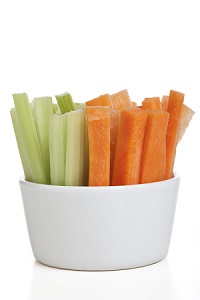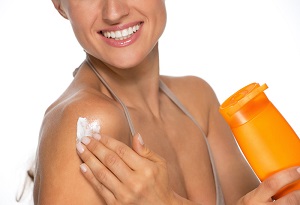 There is nothing worse than that hungry feeling in between meals. You don’t want to ruin all the hard work in your weight loss program by eating snacks throughout the day. You don’t have to have that feeling, there are lots of healthy snacks for weight loss that are delicious and still nutritious.
There is nothing worse than that hungry feeling in between meals. You don’t want to ruin all the hard work in your weight loss program by eating snacks throughout the day. You don’t have to have that feeling, there are lots of healthy snacks for weight loss that are delicious and still nutritious.
A good rule to follow when looking for healthy snack foods is to make sure you look for snacks that are high in protein and contain complex carbohydrates. Protein is critical because it is a primary component of every cell in the human body. The body uses protein to make and mend tissue as well as to reproduce bone, muscle, hair, nail, skin and blood cells. Carbohydrates are the body’s main source of energy and come in two forms, simple and complex. Complex carbohydrates are your better choice, such as whole grains. However, you can choose simple carbohydrates as long as you choose “good” simple carbohydrates, like the ones found in fresh fruits.
It is important to try to keep your snack foods within the range of approximately 100 to 150 calories and not to have them in an amount that would take you over your daily calories count. If you are allowed 1600 calories per day then it is reasonable to have three meals of about 400 calories each and two to three snacks of approximately 100-150 calories each. This should keep you within a calorie count to lose weight and remain on a healthy diet eating plan.
In addition to selecting snacks containing high protein and low carbohydrates, making sure to snack regularly in between meals is vital. It’s a great idea to get in tune with your internal hunger clock; don’t wait until your stomach starts talking to you. Practicing portion control will make snacking more effective for you. Instead of grabbing an entire bag of nuts from the kitchen cabinet, try measuring out the appropriate serving size ahead of time.
Here is a list of some good snack choices.
- Apple slices
- Whole grain bread sticks
- Unsalted rice cakes
- Baked tortilla chips
- Nuts (1 ounce or less)
- Whole grain cereal
- Fresh fruit
- Unsweetened canned fruit
- Baked apple
- Raisins
- Frozen grapes
- Celery
- Dark chocolate
- Air popped popcorn
- Low-fat/fat free fruit yogurt
Eating healthy snack foods is just one part of a health maintenance strategy that should incorporate eating healthy and being active. Talk with your trainer and plan out your meal plan and workout routine.
For more articles go to http://clubonefitness.lifestyleezine.com

 Heart disease continues to be the number one cause of death in many countries. Excess weight and obesity are among the major contributing factors in heart problems. It is extremely important to have a heart smart diet such as one that is low in cholesterol, sodium and trans fats.
Heart disease continues to be the number one cause of death in many countries. Excess weight and obesity are among the major contributing factors in heart problems. It is extremely important to have a heart smart diet such as one that is low in cholesterol, sodium and trans fats.  Whatever the season, it’s always a nice treat to take care of you feet with a pedicure. Whether you do it yourself or visit a salon getting a pedicure will make your feet look nicer in the summer and you’ll be more comfortable in your winter boots with soft smooth feet.Try an at home pedicure. Begin with a long soak. Get your feet into a tub of hot water and soak your feet for at least 10 minutes. Take the dead skin cells off with a pumice stone. When done, make sure you dry your feet well. Moisturize your feet after their soak. Try creams that contain menthol or peppermint for a soothing feeling. The moisturizer will help keep your feet smooth and soft. Trim your toenails and hydrate your cuticles. And finish it all off with some polish. Bright colours can be playful, or chose a colour that will go with your outfit. Finish it with a top coat to protect it.
Whatever the season, it’s always a nice treat to take care of you feet with a pedicure. Whether you do it yourself or visit a salon getting a pedicure will make your feet look nicer in the summer and you’ll be more comfortable in your winter boots with soft smooth feet.Try an at home pedicure. Begin with a long soak. Get your feet into a tub of hot water and soak your feet for at least 10 minutes. Take the dead skin cells off with a pumice stone. When done, make sure you dry your feet well. Moisturize your feet after their soak. Try creams that contain menthol or peppermint for a soothing feeling. The moisturizer will help keep your feet smooth and soft. Trim your toenails and hydrate your cuticles. And finish it all off with some polish. Bright colours can be playful, or chose a colour that will go with your outfit. Finish it with a top coat to protect it. Sleep is so important in our health. And what we eat during the day can have a huge impact on our sleep. Food can affect how easily you fall asleep and the quality of the sleep you get. Some foods help your brain to calm down, while others stimulate it. If you have trouble getting to sleep or sleeping well, your food intake may be unwittingly causing problems.
Sleep is so important in our health. And what we eat during the day can have a huge impact on our sleep. Food can affect how easily you fall asleep and the quality of the sleep you get. Some foods help your brain to calm down, while others stimulate it. If you have trouble getting to sleep or sleeping well, your food intake may be unwittingly causing problems. You may have started to hear a new trend out there called Meatless Monday. There may be some validation to this new initiative. In 2003 Meatless Monday was restarted as a public health awareness program, and by 2009 has been gaining popularity with celebrities campaigning and supporting it. Meatless Monday is part of the Healthy Monday initiative. Healthy Monday encourages people to make healthier decisions at the start of every week.
You may have started to hear a new trend out there called Meatless Monday. There may be some validation to this new initiative. In 2003 Meatless Monday was restarted as a public health awareness program, and by 2009 has been gaining popularity with celebrities campaigning and supporting it. Meatless Monday is part of the Healthy Monday initiative. Healthy Monday encourages people to make healthier decisions at the start of every week.  Remember the old adage, too much of anything in life can be a bad thing? Even something as simple as drinking water can be dangerous if you consume excessive levels. Exercise is a really important part of a healthy lifestyle – but make sure you build a healthy addiction to exercise. Exercising regularly is a major component in leading a healthy lifestyle. To get into the habit of exercising on a regular basis, you may need to set aside time in your schedule to visit the gym and find a type of exercise you can genuinely enjoy. At other times, you may have difficulty becoming addicted to exercising if you feel as if you aren’t reaching your goals in terms of fitness or weight loss. This is where a personal trainer can really keep you motivated and keep your enthusiasm and interest in your workout while changing things up and staying on track of your goals. Take a positive approach to exercise and making specific changes to your lifestyle, you can become addicted to exercising and improve your health in the process.
Remember the old adage, too much of anything in life can be a bad thing? Even something as simple as drinking water can be dangerous if you consume excessive levels. Exercise is a really important part of a healthy lifestyle – but make sure you build a healthy addiction to exercise. Exercising regularly is a major component in leading a healthy lifestyle. To get into the habit of exercising on a regular basis, you may need to set aside time in your schedule to visit the gym and find a type of exercise you can genuinely enjoy. At other times, you may have difficulty becoming addicted to exercising if you feel as if you aren’t reaching your goals in terms of fitness or weight loss. This is where a personal trainer can really keep you motivated and keep your enthusiasm and interest in your workout while changing things up and staying on track of your goals. Take a positive approach to exercise and making specific changes to your lifestyle, you can become addicted to exercising and improve your health in the process. What is Candida?
What is Candida? Are you a die-hard fan of a professional team? Does your face get all red when you’re watching do-or-die moments of your team in the finals? Are you a ball of nerves as the clock ticks down the last seconds of the game and your team is close to the win? It is important to know that sometimes fans of sports teams experience more stress than the players on the team.
Are you a die-hard fan of a professional team? Does your face get all red when you’re watching do-or-die moments of your team in the finals? Are you a ball of nerves as the clock ticks down the last seconds of the game and your team is close to the win? It is important to know that sometimes fans of sports teams experience more stress than the players on the team. The skin, regardless of tone or colour will react when exposed to the sun’s rays repeatedly. This reaction can be in the form of tough, leathery skin or wrinkles just to name a few. The bottom line is, by the time you are just past middle aged, your skin will be wrinkled and rough looking if not properly cared for. The number one thing you must protect your skin from is the sun. The easiest way to avoid damage from the sun would be to avoid the sun entirely, but that is not feasible.
The skin, regardless of tone or colour will react when exposed to the sun’s rays repeatedly. This reaction can be in the form of tough, leathery skin or wrinkles just to name a few. The bottom line is, by the time you are just past middle aged, your skin will be wrinkled and rough looking if not properly cared for. The number one thing you must protect your skin from is the sun. The easiest way to avoid damage from the sun would be to avoid the sun entirely, but that is not feasible.  Superfoods are food which are extremely nutrient dense and give you the biggest bang for your buck compared to other foods. They contain amazing medicinal properties that they have been used in different cultures for thousands of years for healing, for endurance, for vibrant health, and for their anti-aging characteristics.Although all fruits and vegetables contain vitamins and nutrients, some contain far higher amounts of these natural properties. These foods have become known as superfoods. Three major benefits are jam packed in all superfoods are antioxidants, nutrients, and fiber.
Superfoods are food which are extremely nutrient dense and give you the biggest bang for your buck compared to other foods. They contain amazing medicinal properties that they have been used in different cultures for thousands of years for healing, for endurance, for vibrant health, and for their anti-aging characteristics.Although all fruits and vegetables contain vitamins and nutrients, some contain far higher amounts of these natural properties. These foods have become known as superfoods. Three major benefits are jam packed in all superfoods are antioxidants, nutrients, and fiber.